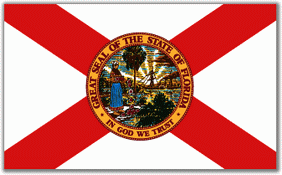Flag and Seal Protocol
The State Flag

Flag Protocols and Display Online Reference - Learn to display and respect your flag
A Message from the Secretary
As Secretary of State, I receive many requests from teachers, organizations, businesses and citizens across the state seeking information about the proper display of flags.
I am honored to provide such information in the Flags Protocol and Display Web page provided by the Department of State. All material in this booklet was checked for accuracy by the Institute of Heraldry of the United States Army.
The customs and traditions that surround the display and use of our flag are guides to the means by which we as proud and grateful citizens may demonstrate the ultimate respect for the flag of our nation. We give homage to the flag because it stands for the courageous, earnest and unselfish experiences of our people who have given us strength as a nation and pride as citizens.
Flags are an integral part of our national pride and heritage. By following proper flag protocol, you are displaying your pride in the flag and signifying respect for people dedicated to liberty, justice and freedom for all.
Thank you for your interest.
For More Information




View all of Florida's Historic Flags.
Purchase an Official Florida Flag
Flags can be purchased from the Museum of Florida's History Shop. Contact Florida's History Shop at 850.245.6396, or at floridashistoryshop.com.
Great Seal of the State of Florida

Learn about the history of the Florida State Seal and request to use the Seal.
In 1985, Secretary of State George Firestone presented the revised Great Seal of the State of Florida to the Governor and the Cabinet. The previous State Seal had several errors which were corrected in the 1985 Seal. This revised Seal has a Seminole Indian woman rather than a Western Plains Indian, the steamboat is more accurate, and the cocoa palm has been changed to a sabal palm as the Legislature prescribed in 1970.
